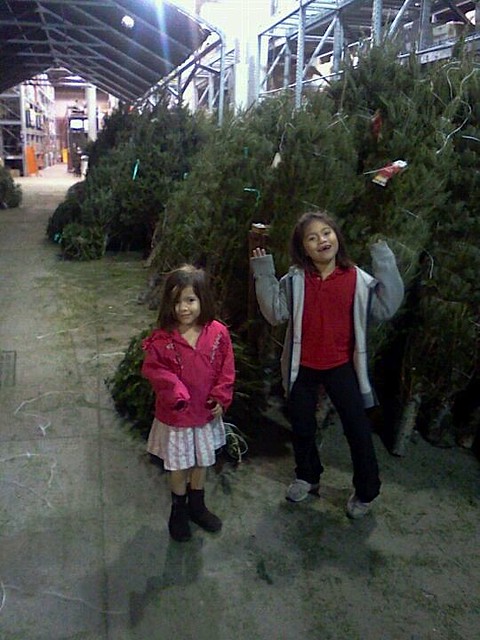 We went looking for a Christmas tree the other day, but came home empty handed. Why? For the first time in over 10 years, we’re setting up an artificial Christmas tree. I kept going back and forth about it – which is the greener option? – and finally decided this was the right choice for us.
We went looking for a Christmas tree the other day, but came home empty handed. Why? For the first time in over 10 years, we’re setting up an artificial Christmas tree. I kept going back and forth about it – which is the greener option? – and finally decided this was the right choice for us.
Ultimately I couldn’t determine which one is greener, as both seem to have a similar impact on the environment, so honestly, it came down to me being tired of the process of buying a real tree! Choosing just the right one, bringing it home, setting it up, trimming the unruly branches, lighting it, watering it, sweeping up the pine needles that get everywhere, and finally, trying to fit it through the door when it’s time to dispose of it. Plus, the artificial one will pay for itself in 4-5 years, and I plan on having it much longer than that. I read that over 10 years, real trees could cost over 3 times as much as an artificial tree.
So we bought a pretty 7.5 foot Snowy Fir at Home Depot, from the Martha Stewart line. Maya was a little disappointed at first because she doesn’t like the idea of a fake tree, but I embellished my story a little bit, convincing her that it’s “everlasting.” Funny how one little word makes it suddenly sound magical! 😉
That said, if the girls really want a real tree in the coming years, I’ll give in to their request. Maybe we’ll buy a smaller one that they decorate and we can display in our family room, or a bulb tree that we can replant outside later on. We’ll see.
YOUR TURN: Do you have a real or artificial tree? Any reason why?
__________________________________________________________________
A Live Christmas Tree Buying Guide
I came across these tips on buying a live tree that I thought you might find helpful.
1. Ask Where It Came From
Some Christmas tree lots buy trucked-in trees before Thanksgiving, meaning they’ll drop needles faster than airlines can raise their baggage fees. Weeks may have passed since those trees were originally cut, so always ask the vendor where and when they buy their trees.
2. Check for Freshness
Is the tree green and healthy with a fragrant scent and moist, flexible needles? Does it have damaged bark or broken branches? When you bounce it lightly on the ground, does it shower you with needles?
3. Weigh It
A heavy tree — proportionate to its size — means it contains a higher water content, and is therefore fresh.
4. Buy Locally Grown
Is there an area farm that sells freshly cut trees? You’ll still want to give them the bounce test, but just the fact they were cut on-site means the trees are fresher. Enter your zip code under “Find My Tree Now” on the National Christmas Tree Association’s website to find your nearest provider.
5. Cut Your Own
It takes some effort and a good axe or saw, but there’s a great deal of satisfaction in harvesting your own tree, from an approved location, of course. Finding just the right tree and tackling the job as part of a team also makes for a fun outing.
6. Buy Online
You can buy anything online these days. Companies like Christmas Trees Galore offer free shipping and you won’t have to cart the tree home on top of your car. Check FreeShipping.org for delivery deals and while you’re there, find free shipping offers on ornaments and other decorations.
7. Treat It Tenderly
Keep the tree outside in a shaded, cool place for a couple days, preferably standing in water. Before bringing it indoors, cut half an inch or so off the butt end to open up its pores, much as you would with cut roses. Once inside, remember to keep the tree stand topped up with water each day.
Tips provided by Andrea Woroch, a consumer and money-saving expert for Kinoli Inc. that has been featured on top news outlets such as Good Morning America, NBC’s Today, MSNBC, New York Times, Kiplinger Personal Finance, CNNMoney and more.
[…] as I told you last week, we bought our first artificial Christmas tree this year. I mean, I always grew up having an artificial tree – one of the reasons […]